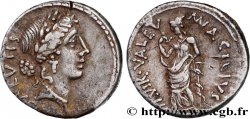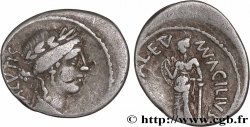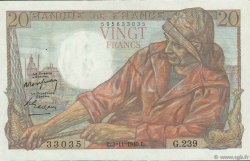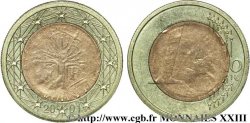brm_354054 - ACILIA Denier
No disponible.
Artículo vendido en nuestra tienda (2021)
Precio : 100.00 €
Artículo vendido en nuestra tienda (2021)
Precio : 100.00 €
Tipo : Denier
Fecha: 49 AC.
Nombre del taller / ciudad: Grèce ou Illyrie
Metal: plata
Milésimas de pureza : 950 ‰
Diámetro: 18 mm
Eje de acuñación: 5 h.
Peso: 3,69 g.
Grado de rareza: R1
Comentarios sobre el estado de conservación:
Exemplaire sur un petit flan ovale, légèrement décentré au droit. Usure régulière. Patine grise
N° en los catálogos de referencia :
Pedigrí:
Exemplaire provenant de la collection Thierry Petit
Anverso
Titulatura del anverso: SALVTIS.
Descripción del anverso: Tête de Salus (la Santé) laurée à droite.
Traducción del anverso: “Salutis”, (de la Santé).
Reverso
Titulatura del reverso: (MN) ACILIVS/ III VIR VALE(TV).
Descripción del reverso: Valetudo (la Santé) debout à gauche, appuyée sur une colonne de la main gauche et tenant un serpent de la main droite.
Traducción del reverso: “Manius Acilius Triumviri Valetudinis”, (Manius Acilius triumvir monétaire Valetudo).
Comentario
Défaut de métal dans le champ au revers. Pour ce type, M. Crawford a relevé une estimation de 651 coins de droit et de 723 coins de revers ce qui pourrait correspondre à une fabrication totale comprise entre un million et demi et trois millions de deniers. C’est l’un des types monétaires qui permit de financer le parti sénatorial au début de l’année 49 avant J.-C. quand ce dernier rejoignit Pompée qui avait quitté Rome. Les auteurs du Catàlogo ont différencié trois variétés dont la nôtre qui semble la plus rare avec le mot SALVTIS qui remonte vers le haut derrière la tête.
Metal defect in the field on the reverse. For this type, Mr. Crawford noted an estimate of 651 obverse dies and 723 reverse dies, which could correspond to a total production of between one and a half and three million denarii. This is one of the monetary types that allowed the financing of the senatorial party at the beginning of 49 BC when the latter joined Pompey who had left Rome. The authors of the Catàlogo differentiated three varieties, including ours, which seems to be the rarest, with the word SALVTIS rising upwards behind the head.
Metal defect in the field on the reverse. For this type, Mr. Crawford noted an estimate of 651 obverse dies and 723 reverse dies, which could correspond to a total production of between one and a half and three million denarii. This is one of the monetary types that allowed the financing of the senatorial party at the beginning of 49 BC when the latter joined Pompey who had left Rome. The authors of the Catàlogo differentiated three varieties, including ours, which seems to be the rarest, with the word SALVTIS rising upwards behind the head.







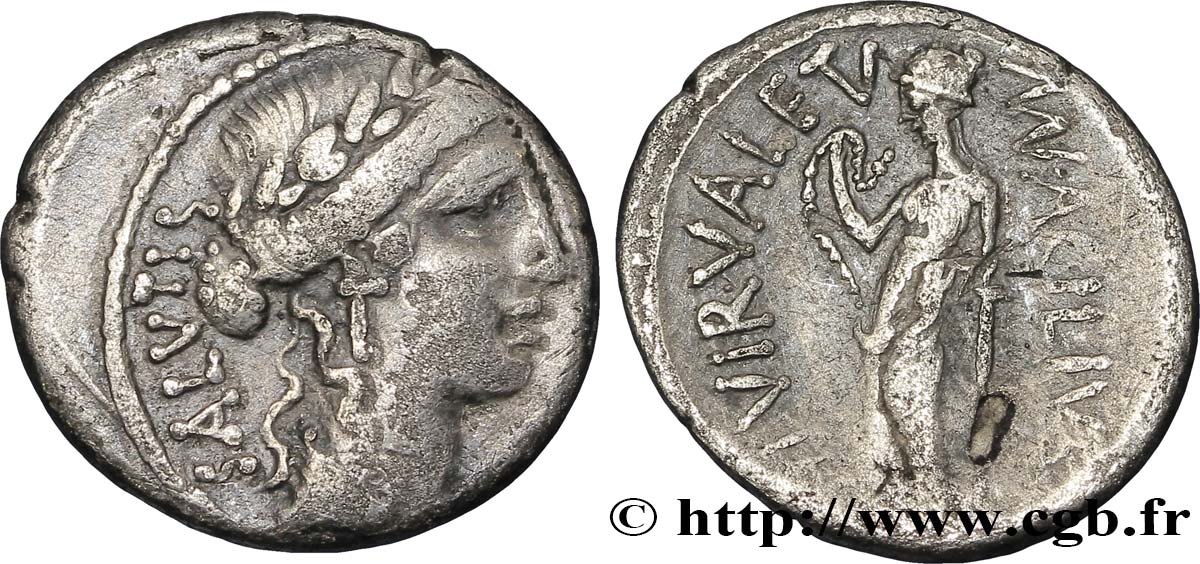
 Informar de un error
Informar de un error Imprimir la página
Imprimir la página Comparte mi selección
Comparte mi selección Haz una pregunta
Haz una pregunta Consignar / vender
Consignar / vender
 Descriptivo
Descriptivo